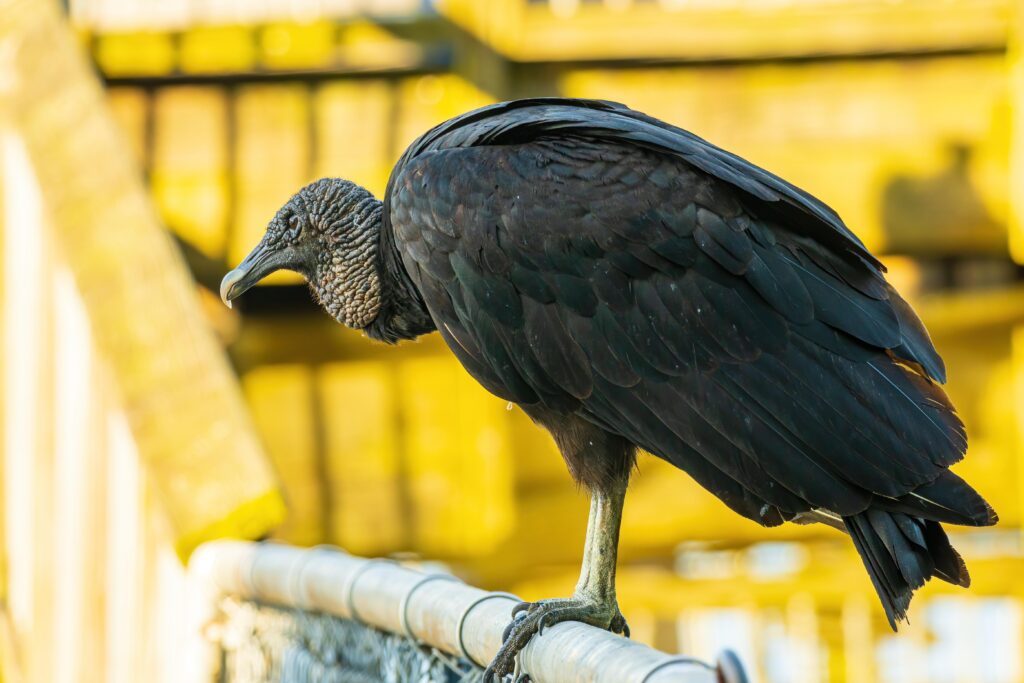
Two species of vultures are found in Pennsylvania: the black vulture and the turkey vulture. They are often mislabeled as buzzards, which is an old world (Europe and Asia) term for hawks of the Buteo family. Vultures are carrion-feeding raptors.
Turkey Vultures
| Appearance | Turkey vultures are large birds with blackish-brown feathers and pink heads and necks. Their heads and necks are featherless and they have sharp talons and bills—all of these features help with digging through carrion. |
| Length | Around 30 inches, with wingspans up to 6 feet |
| Habitat | Caves, steep cliffs, hollow stumps and logs, and dense thickets |
| Food | Carrion (dead animals) found in fields, woods and along highways |
| Location in Pennsylvania | Statewide |
| Extra facts | Turkey vultures are the main scavenger bird in the United States. They have strong senses of smell and vision. Turkey vultures have no voicebox and can only make hissing and grunting sounds. Both parents share in incubating their young. |
Black Vultures
| Appearance | Black vultures have short tails and white patches on the underside of their wings. They are bald like turkey vultures, but their heads are black instead of red. |
| Length | Around 24 inches, with a wingspan less than 5 feet |
| Habitat | Similar to turkey vulture |
| Food | Similar to turkey vulture |
| Location in Pennsylvania | Statewide |
| Extra facts | While turkey vultures use their sense of smell to locate food, black vultures rely more heavily on a keen sense of eyesight to find their food. |
Complaints
Both vulture species are known for roosting on houses, buildings and high tension towers, sometimes in great numbers. This collection of birds will account for a great amount of white fecal waste building up on roofs and yards.
Solutions
Both vulture species are federally protected and as such cannot be lethally removed without a federal permit issued by the United States Fish and Wildlife Service (USFWS). Licensed Wildlife Control Agents can use non-lethal methods to harass and deter the vultures. The use of water hoses, loud noises and lasers can sometimes chase the birds away. In addition, the birds are sometimes deterred with the use of “effigies” or stuffed dead vultures or decoys.

For more information about vultures, check out the Pennsylvania Game Commission’s wildlife notes.
